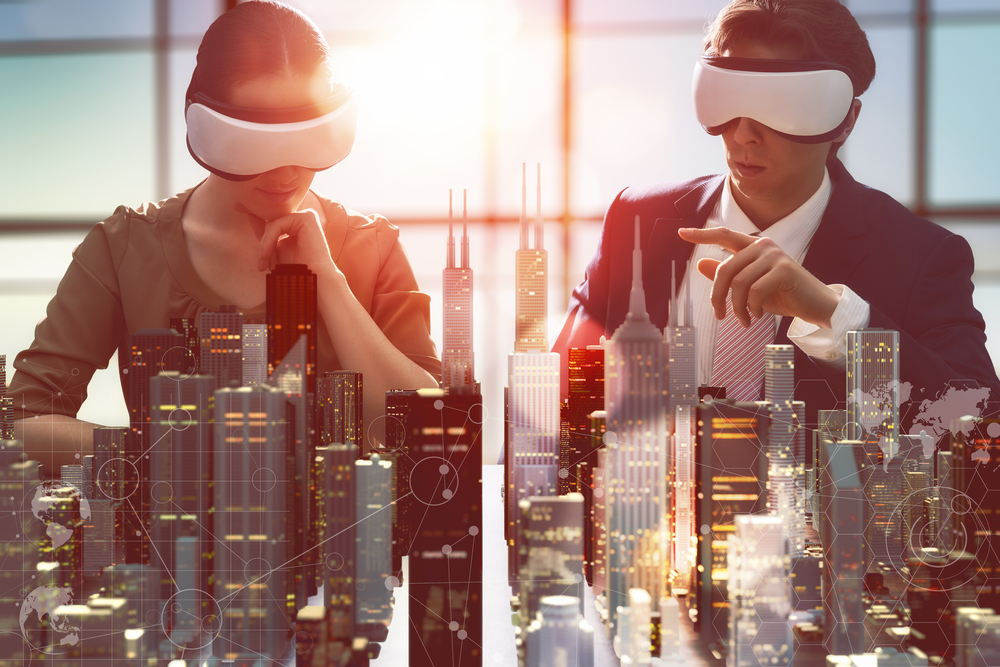What is the Future of Virtual Reality

For those of you who haven’t heard about virtual reality, it’s exactly what it sounds like. It’s a way to experience something that isn’t real in the hopes of learning more about the world around us or even just having fun. The technology is still pretty new, but there are some really cool things happening with virtual reality right now. Here’s what we know so far:
Virtual reality has been around for decades, but still hasn’t hit the mainstream
Virtual reality is the technology of simulated environments, achieved by interacting with a computer and wearing a special headset. It’s been around for decades, but still hasn’t hit the mainstream. This might be because it’s expensive and requires a great deal of technical know-how to use—or maybe we just don’t want it enough yet.
What is virtual reality?
Virtual reality (VR) is an interactive computer-generated experience that simulates real life. It uses complex software to create the illusion that you’re actually within a virtual world, seeing through cameras in the headset and hearing sounds through headphones or speakers. Users can interact with this environment, giving them an immersive experience they couldn’t get from any other medium like television or cinema screens.
The first virtual reality headset was invented in 1968
The first virtual reality headset was invented in 1968, and it was called the Sensorama. It was a device used to simulate the experience of riding a motorcycle through its stereoscopic display, stereo sound, and wind simulation.
The idea behind this device was so popular that people were willing to pay $50 for it at the time—about $300 today. The Sensorama was eventually eclipsed by other gaming devices (namely Pong) because it never really caught on with consumers or developers.
Virtual reality is used for entertainment, but not just for video games
Virtual Reality is used for entertainment, but not just for video games. Virtual reality can be used in many different ways and areas of life.
- Education – VR allows students to explore places and events that they wouldn’t otherwise get to experience. It helps them develop skills like critical thinking and problem-solving through simulations. Students are also able to review content in a way that allows them to connect concepts together better than if they were just reading about it or listening to someone talk about it.
- Medicine – VR allows doctors and psychologists an opportunity to practice their skills without putting patients at risk or having their lives put on hold while waiting for treatment. It also lets physicians understand what patients are experiencing so they can better assess the situation before making decisions on how best deal with any health concerns.* Military training – Virtual reality technology is being developed right now so soldiers can be trained more effectively using simulations instead of real-world practices.* Architecture – VR is also being used by architects who want more accurate 3D models created so they can design buildings faster without wasting materials when making mistakes along the way
Virtual reality can be used for education as well as entertainment
It’s not just for gaming. In fact, VR is already being used in some pretty interesting ways.
- In the field of medicine, doctors can use VR to accurately simulate a procedure that would otherwise be dangerous or expensive. They can also create immersive training programs for new surgeons and nurses that give them hands-on experience they wouldn’t otherwise get until they’re working on real patients.
- Some companies are even using virtual reality as a way to train pilots—it allows them to simulate dangerous situations without putting any lives at risk!
- History teachers may soon be able to take their students on virtual field trips through ancient civilizations or even help them practice taking tests while standing inside the Great Pyramid of Giza (which would definitely impress your parents).
Teaching through virtual reality can be a lot of fun for students
Virtual reality can be a great way to teach students about the world around them. It’s also great for allowing students to learn more about their own bodies and how they work.
Teaching through virtual reality is a lot of fun for both students and teachers, but it may take some time before virtual reality becomes widespread enough that we can all use it as a teaching tool in our classrooms.
Video games are ahead of other industries when it comes to virtual reality
One of the first industries to really embrace virtual reality was the video game industry. This makes sense, because playing video games is one of the best ways to show off what VR can do. For example, if you want to try out a new type of display that gives players a 3D view in their headset, you can create an entire world for them to explore and experience how well it works with your headset.
It’s also important for companies like Sony and Microsoft to lead the way when it comes to virtual reality development because they want their devices (PlayStation VR and Windows Mixed Reality) to be able to play all kinds of games once they come out next year. If these companies don’t invest heavily in developing new technologies so that there will always be games available for people using their devices then nobody would buy them!
The current technology is bulky, expensive and even a little dangerous
- The current technology is bulky, expensive and even a little dangerous.
- The technology is not yet ready for public use.
- It can be used in planes and cars, but it’s still not safe for children (or adults).
- It may cause motion sickness for some people.
There’s still a long way to go before virtual reality the way we see it in movies is a reality in our homes
Virtual reality is something that many people think about as a futuristic concept, one that will remain in the realm of science fiction for years to come. But the truth is that this technology is already here and available—you just have to know where to look for it.
There are still many things to improve on before virtual reality becomes mainstream, however, including making it more affordable and accessible for everyone. There are also different types of virtual reality technologies available, each with its own pros and cons depending on what you’re looking for. Before we get into these details though, let’s take a minute or two to talk about what exactly “virtual” means when referring to this technology!
Virtual reality has a lot of potential, but we’re not quite there yet
Virtual reality has a lot of potential, but it’s not quite there yet.
VR is still in its infancy and has a long way to go before it can reach mass adoption and become a viable technology for the average person.
Virtual reality is still expensive: The price point for VR headsets is high and will be so until the industry matures and prices drop.
Virtual reality is clunky: There are cables attached to the headset that tether you to one place (like your computer), which means you can’t move around freely in your physical environment—and that could cause some problems if you’re wearing an expensive headset!
Virtual reality may also be dangerous for young children: While there aren’t any major studies that have proven this yet, many experts believe that heavy use of VR can cause eye problems or even brain damage over time. And since most people don’t know what they’re getting into when they buy their first headset… well…
Conclusion
Virtual reality is here to stay. The technology is advancing rapidly, and there are a lot of people working hard on making it better. We might not have virtual reality the way we see it in movies yet, but it’s only a matter of time before we do!
